If you never heard about Vue.js or use it befor, you are probably thinking: Oh my God! another javascript framework! what the hell is going on, well in fact the first release of Vue is was in 2014.
Vue is light and fast javascript framework, it’s easy to learn, focused on the view layer, and is very easy to pick up and integrate with other libraries or existing projects On the other hand, Vue is also perfectly capable of powering sophisticated Single-Page Applications when used in combination with modern tooling and supporting libraries.
In this post I am going to guide on how use Vue.js based application using visual studio.
if you don’t already have visual studio you can download the free version of visual studio https://www.visualstudio.com/vs/community/.
What is Vue.js?
Vue.js is a progressive framework for building user interfaces. Unlike other monolithic frameworks, Vue is designed from the ground up to be incrementally adoptable. The core library is focused on the view layer only, and is very easy to pick up and integrate with other libraries or existing projects. On the other hand, Vue is also perfectly capable of powering sophisticated Single-Page Applications when used in combination with modern tooling and supporting libraries.
Create a Empty ASP.NET project?
let’s first create an empty web application, launch visual studio and create a new asp.net application:
- Click New Project in the Start page or in the File menu.
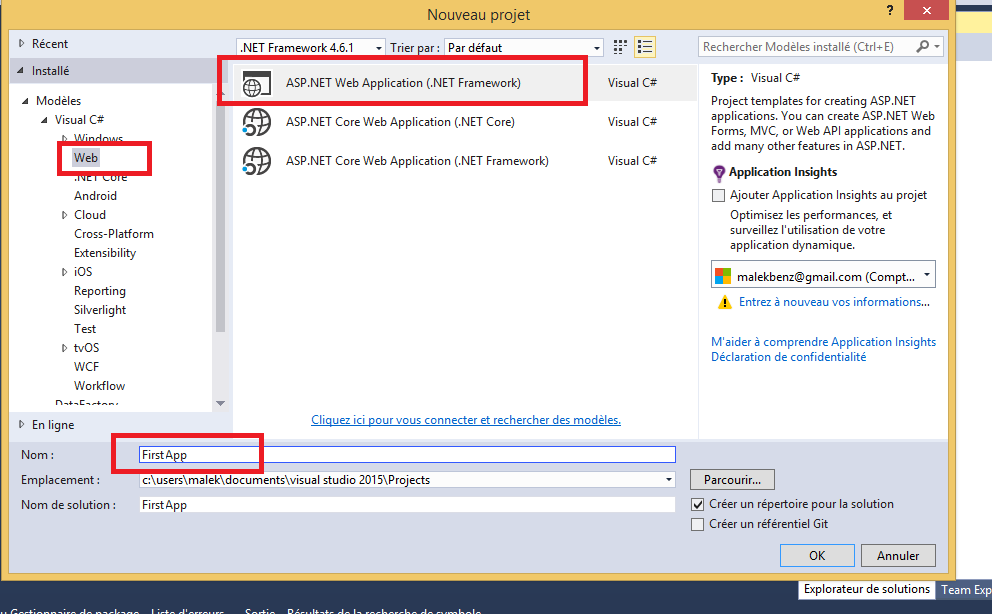
- In the New Project dialog, click Web in the left pane and ASP.NET Web Application in the middle pane.
Specify project Name firstApp, Location, and other options, and then click OK.

- The New ASP.NET Project dialog appears Click a empty template , and then click OK.
Now create a new folder app and add new html page index.html:
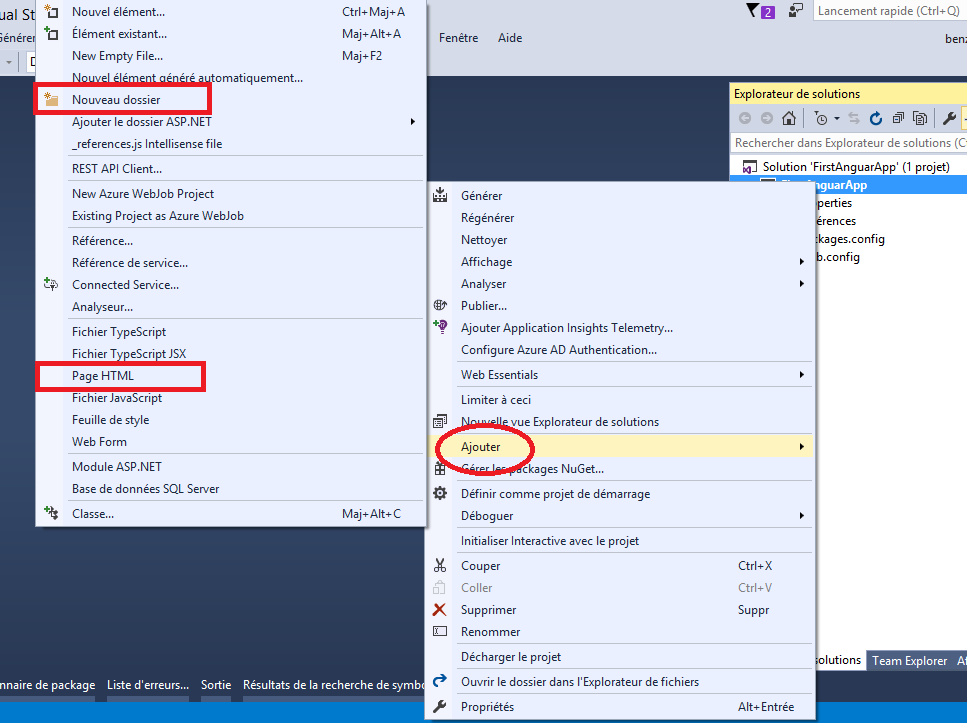
update index.html :
<!DOCTYPE html>
<html>
<head>
<meta http-equiv="Content-Type" content="text/html; charset=utf-8" />
<title></title>
<meta charset="utf-8" />
</head>
<body>
<h1>My first Vue.js application with visual studio</h1>
</body>
</html>
this is a simple web application.
Install Vue.js :
In order to use Vue.js download Vue.js from https://vuejs.org/v2/guide/installation.html and click Production version of vue.js :
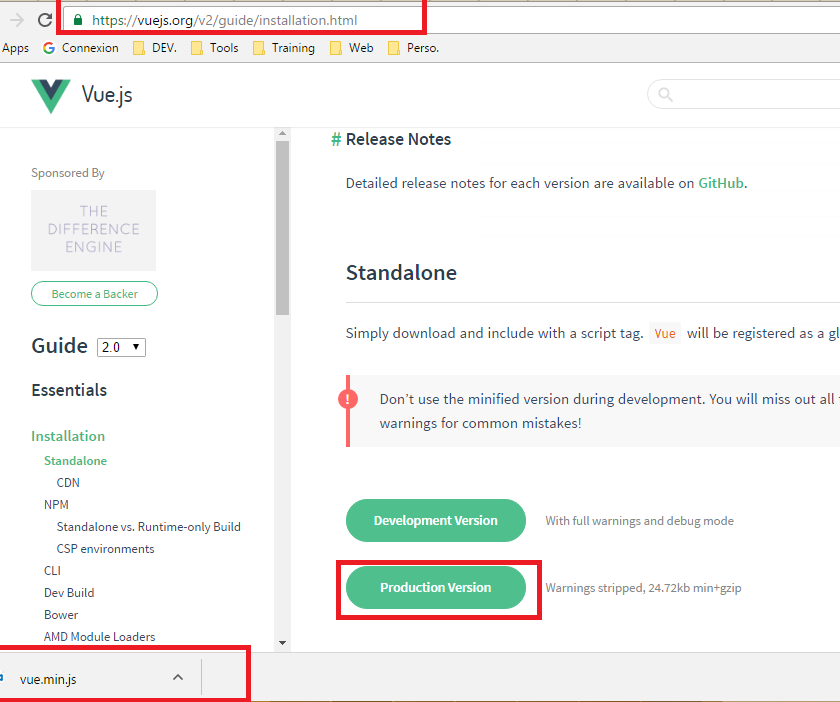
Copy vue.min.js to the app folder
Update index.html :
<body>
<h1>My first Vuejs application with visual studio</h1>
<div id="app">
Select a title: <input type="text" v-model:value="title" />
book title is :
</div>
<script src="app/vue.min.js"></script>
<script>
app = new Vue({
el: "#app",
data: {
title: "First Vue.js app"
}
});
</script>
</body>
you should get something like :
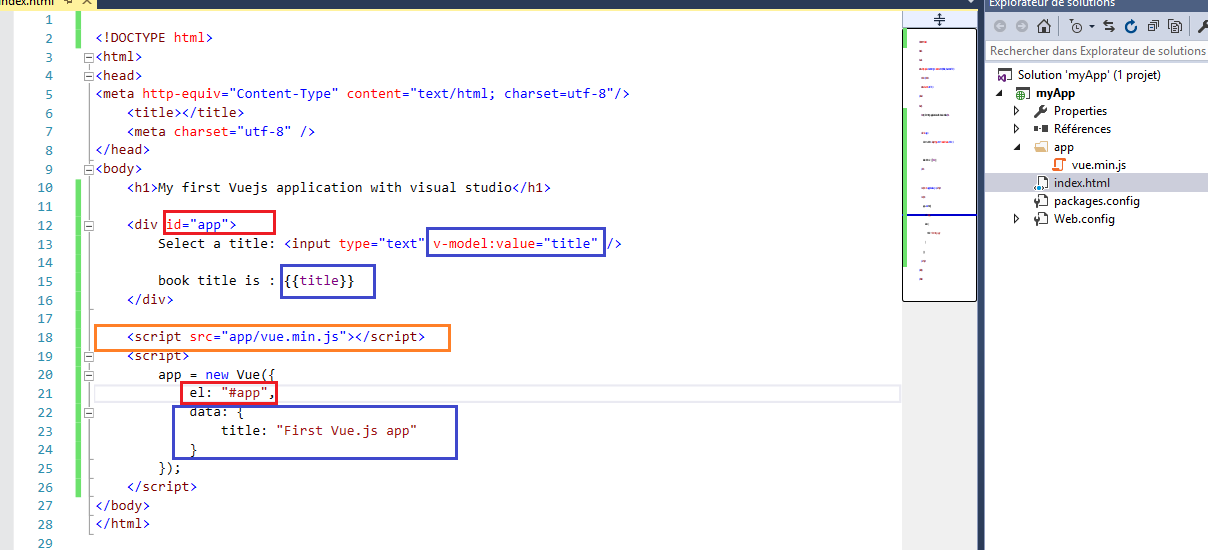
Run the app and you should see something like:
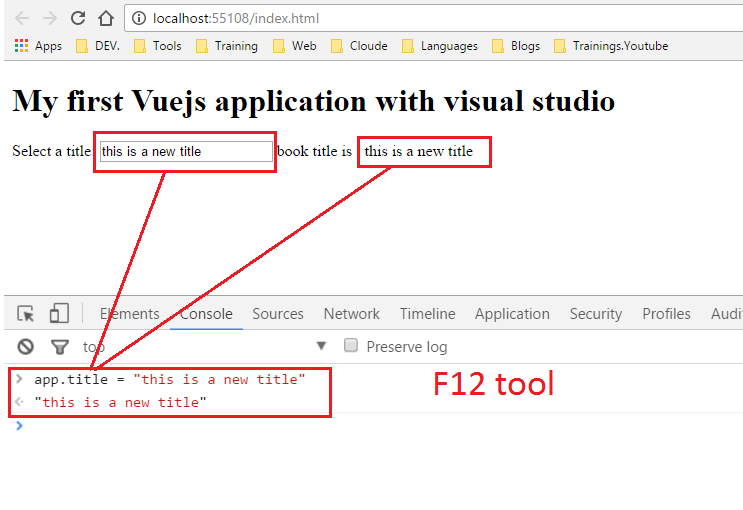
click F12 to get F12 tool, in the console pane type:
app.title = "this is a new title"
Wow everything is in sync.
v-for directive:
v-for directive is used to iterate over an array or the properties of an object, let’s add to our app an array of books:
<div id="app">
Select a title: <input type="text" v-model:value="title" />
book title is :
<ul>
<li v-for ="book in books"> -- </li>
</ul>
</div>
<script src="app/vue.min.js"></script>
<script>
app = new Vue({
el: "#app",
data: {
title: "First Vue.js app",
books : [
{ id: 1, title: "Learn asp.net" },
{ id: 2, title: "Learn javascript" },
{ id: 3, title: "Learn angularjs" },
{ id: 4, title: "Learn nodejs" }
]
}
});
</script>
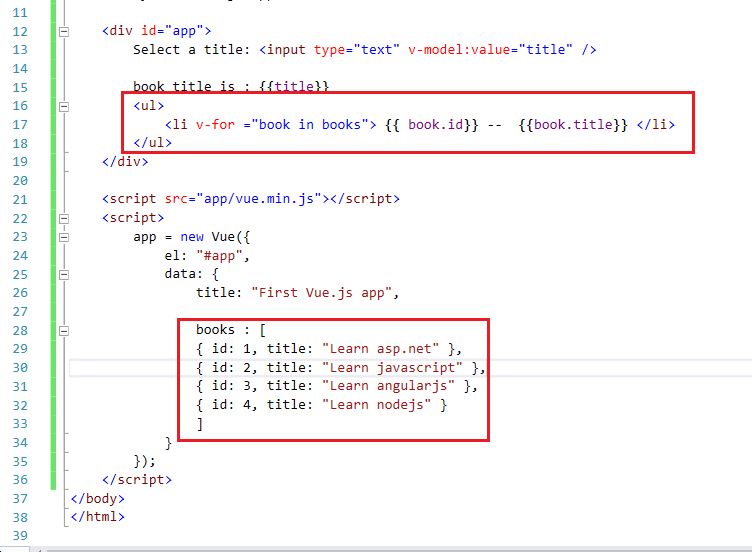
<ul>
<li v-for="book in books"> </li>
</ul>
Run the app:
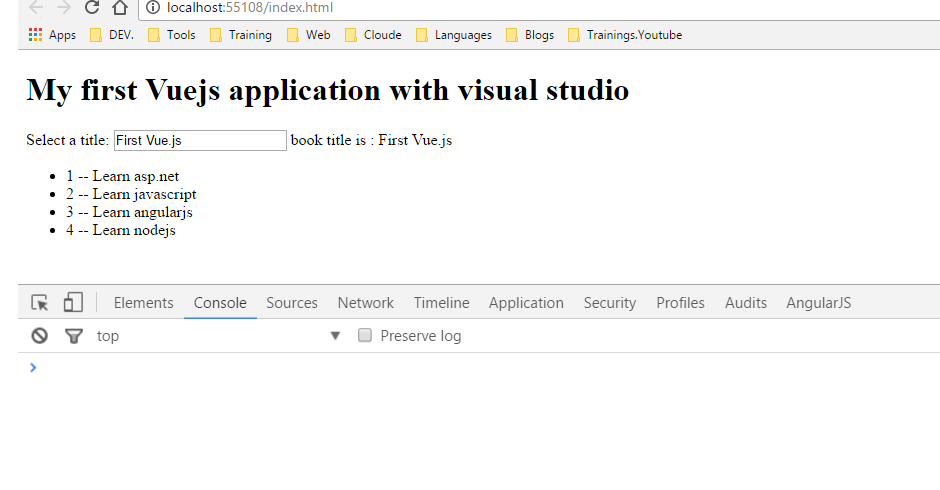
Methods:
Now let’s add some serach functionality using methods property of our app object , update index.html
<ul>
<li v-for ="book in filterByTitle(title)"> -- </li>
</ul>
and the script part by adding new method filterByTitle to our app object:
app = new Vue({
el: "#app",
data: {
title: "First Vue.js app",
books : [
{ id: 1, title: "Learn asp.net" },
{ id: 2, title: "Learn javascript" },
{ id: 3, title: "Learn angularjs" },
{ id: 4, title: "Learn nodejs" },
{ id: 4, title: "Learn Vue.js" }
]
},
methods: {
filterByTitle: function (title) {
return this.books.filter(function (el) {
return el.title.indexOf(title)>=0;
});
}
}
});
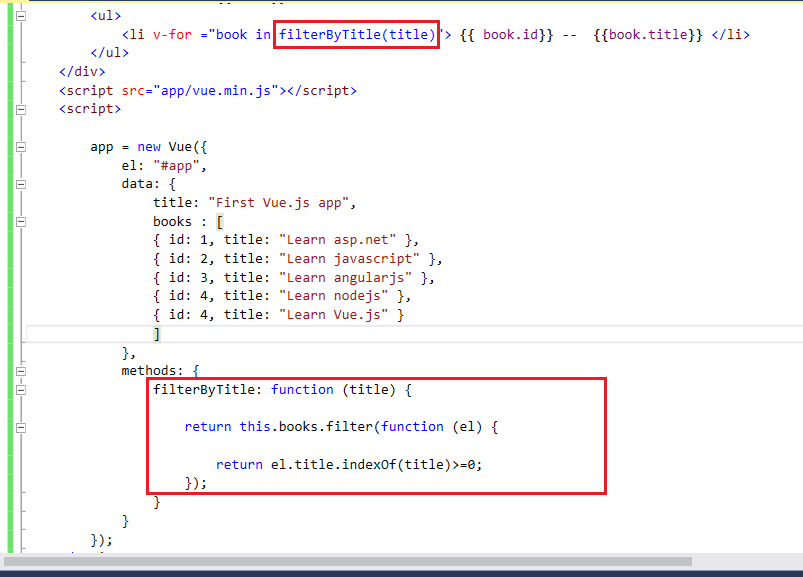
Run the app:

Congratulations!.